Laser Tattoo Removal for Scalp Micropigmentation: Comprehensive Guide to SMP, Common Mistakes, Regrets, and Choosing the Right Practitioner
Laser Tattoo Removal for Scalp Micropigmentation – Scalp Micropigmentation (SMP) is a transformative non-surgical procedure designed to replicate the appearance of natural hair follicles on the scalp, creating a fuller look for thinning hair or the illusion of a shaved head for those experiencing significant hair loss.
SMP is versatile, providing effective solutions for different forms of hair loss, including male pattern baldness, thinning hair, alopecia, and scarring. While SMP is generally a successful treatment, some individuals may find themselves unhappy with their results, requiring a need for laser tattoo removal.
In this comprehensive guide, we will explore the detailed process of SMP, its common applications, advantages over other hair restoration methods, common mistakes, and regrets associated with SMP. We will also delve into how laser tattoo removal can reverse SMP treatments, the different laser technologies used for this procedure, and why the ND:YAG
laser is considered the gold standard for SMP removal. Additionally, we will provide insights on choosing a reputable practitioner, emphasizing the expertise of award-winning SMP artist Rebecca Brown.
Laser Removal for Scalp Micropigmentation – What is Scalp Micropigmentation (SMP)?
Scalp Micropigmentation (SMP) is a non-invasive cosmetic tattooing technique that uses micro-needles to apply specialized pigments to the scalp. These pigments replicate the appearance of tiny hair follicles, giving the illusion of a fuller head of hair or a closely shaved scalp.
SMP is commonly used to treat a wide range of hair loss conditions and is favored for its ability to deliver natural-looking results without the need for invasive surgery.
Laser Removal for Scalp Micropigmentation – Common Applications for SMP
SMP can be used to address a variety of hair loss conditions in both men and women. Here’s a more detailed look at the key applications of SMP:
- Male Pattern Baldness (Androgenetic Alopecia)
Male pattern baldness is the most common cause of hair loss in men, often leading to thinning at the crown, receding hairlines, or total hair loss on the scalp. SMP offers an effective solution for restoring the appearance of hair without surgery.
- Recreating Hairlines: SMP can recreate a natural-looking hairline, tailored to suit the client’s face and age, providing a more youthful appearance.
- The Buzz-Cut Look: For men who are completely bald, SMP can give the illusion of a clean, closely shaved head, offering a modern and stylish appearance.
- Blending with Natural Hair: SMP can also be applied in thinning areas to blend with existing hair, making the scalp appear fuller and denser.
- Thinning Hair (For Both Men and Women)
SMP is an effective option for individuals experiencing thinning hair, whether they are male or female. By placing pigments between thinning hair strands, SMP gives the illusion of thicker hair without the need for hair systems or transplants.
- Adding Density: SMP enhances the appearance of hair density, making thinning areas look fuller and healthier.
- Natural Enhancement: For those looking for subtle improvements, SMP offers a natural, understated change that blends seamlessly with the surrounding hair.
- Alopecia
Alopecia is an autoimmune condition that causes hair loss, which can occur in patches or across the entire scalp. SMP is an excellent option for those looking to cover bald patches or create a natural-looking shaved appearance.
- Alopecia Areata: SMP is effective for covering the patchy bald spots caused by this form of alopecia.
- Alopecia Totalis and Universalis: For individuals with total scalp or body hair loss, SMP can replicate the look of a closely shaved head, restoring confidence and self-esteem.
- Scalp Scarring (From Hair Transplants, Surgeries, or Injuries)
For individuals with visible scars on their scalp, SMP can help blend these scars with the surrounding scalp by using pigments that match the natural hair follicles. This is particularly useful for those who have scarring from previous hair transplants or accidents.
- Enhancing Hair Transplants
SMP can be used in conjunction with hair transplants to enhance the overall appearance. In cases where the transplant has left some areas looking sparse, SMP can fill in the gaps, giving the impression of a denser, fuller head of hair.
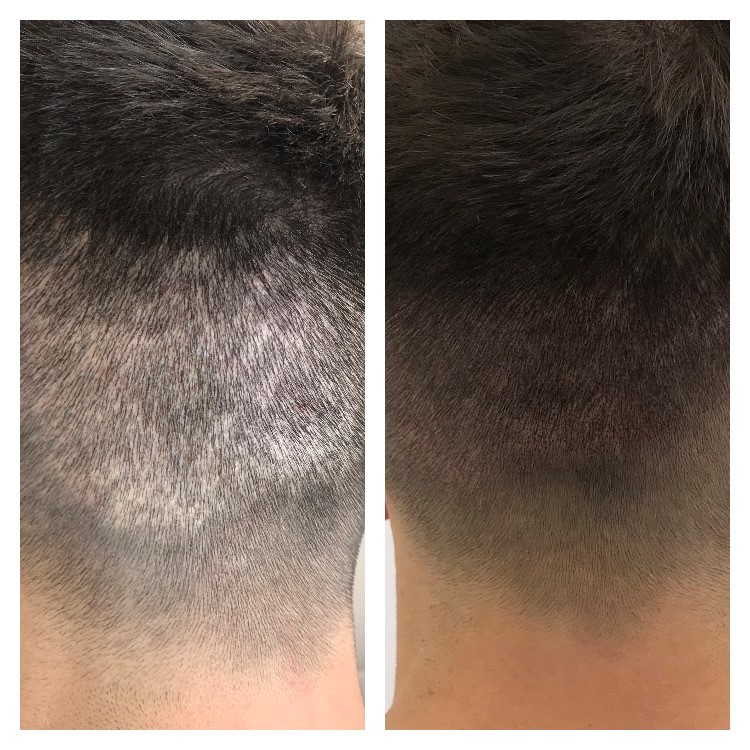
Advantages of SMP Over Hair Transplants and Hair Systems
SMP offers a number of advantages over traditional hair transplants and hair systems, making it a preferred choice for many individuals:
- Non-Surgical: Unlike hair transplants, SMP is non-invasive and does not require incisions, stitches, or a lengthy recovery period.
- Cost-Effective: SMP is generally more affordable than hair transplants, which can cost thousands of pounds depending on the extent of the treatment.
- Immediate Results: The results from SMP are visible immediately after treatment, unlike hair transplants, which can take months for hair to grow in fully.
- Minimal Downtime: SMP allows clients to return to their daily activities almost immediately, whereas hair transplants often require several weeks of recovery.
- Low Maintenance: SMP requires very little maintenance, with touch-ups needed every few years to maintain vibrancy. Hair systems, on the other hand, require regular cleaning, styling, and replacements.
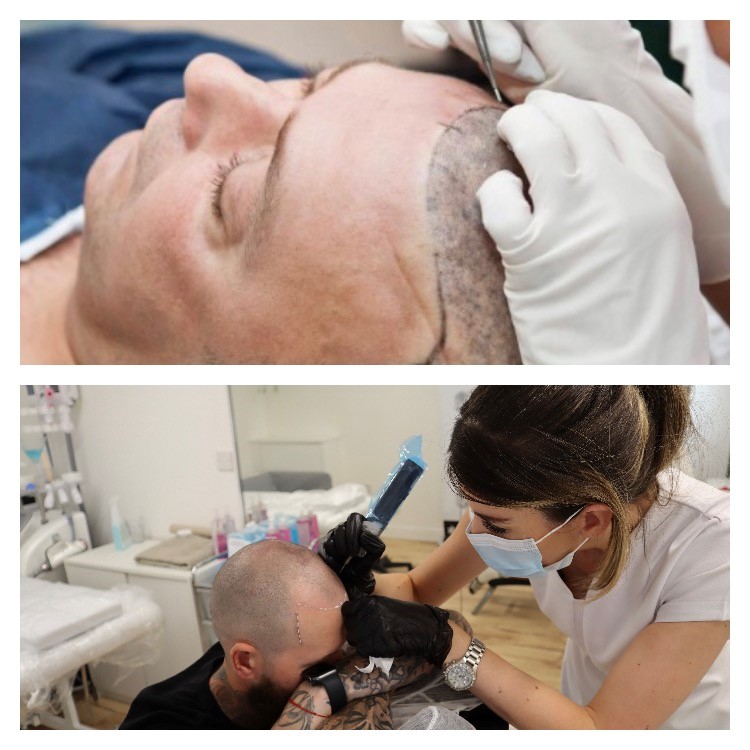
Common Scalp Micropigmentation Mistakes
While SMP is generally a reliable and safe procedure, errors can happen, especially when performed by inexperienced practitioners. Some common mistakes include:
- Wrong Pigment Color: If the pigment chosen doesn’t match the client’s natural hair color, the result may look unnatural or overly harsh.
- Uneven Hairline Design: A poorly designed or overly sharp hairline can appear unnatural, making it obvious that the individual has had work done.
- Overcrowding of Dots: When pigment dots are placed too closely together, it can create a solid, ink-like appearance rather than the illusion of individual hair follicles.
- Inconsistent Coverage: If the SMP is applied unevenly, it can lead to areas of the scalp that look patchy or unfinished.
- Improper Depth: If the pigment is implanted too deep or too shallow, it may fade quickly or discolour, leading to an unsatisfactory result.
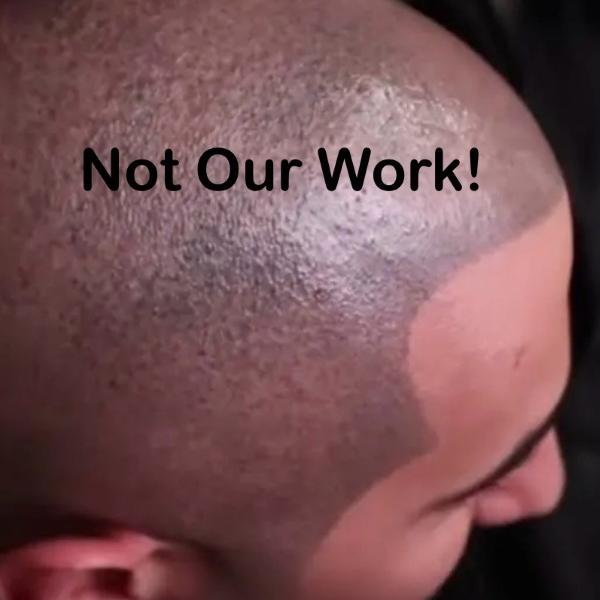
Common Scalp Micropigmentation Regrets
Despite the many benefits of SMP, some individuals may experience regret after their procedure. Common reasons for this include:
- Unnatural Hairlines: An overly defined or aggressive hairline may look out of place, particularly as the client ages.
- Fading or Discoloration: Improper technique or the use of incorrect pigments can result in uneven fading or discoloration over time.
- Inexperienced Practitioners: Choosing a practitioner without the proper training or experience can lead to disappointing results.
Oversized Pigment Dots: Larger dots can create an unnatural, tattoo-like appearance, which detracts from the intended look of natural hair follicles.
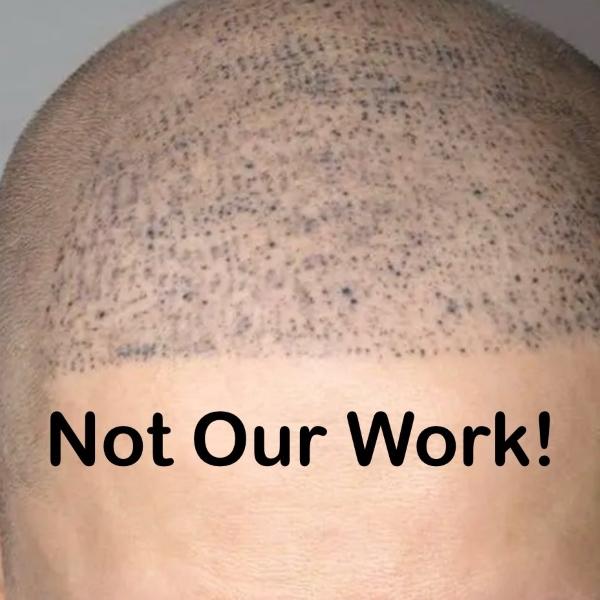
How to Avoid Scalp Micropigmentation Regrets
To avoid regrets with SMP, it’s essential to make informed decisions and select a reputable practitioner. Here are some tips:
- Research Practitioners: Look for a practitioner with a strong portfolio and a history of successful treatments.
- Customization: Work with your practitioner to create a hairline and coverage plan that suits your face shape, age, and hair type.
- Ask Questions: Make sure you understand the procedure, aftercare, and potential risks before committing.
- Follow Aftercare Instructions: Proper aftercare is crucial to achieving optimal results and avoiding complications like fading or infection.
Laser Tattoo Removal for Scalp Micropigmentation: Choosing a Reputable SMP Practitioner
The key to a successful SMP experience is choosing the right practitioner. A skilled, experienced SMP artist can ensure that the procedure is performed correctly, reducing the need for enhanced aftercare or future modifications. A reputable practitioner will also be a valuable source of information, offering years of expertise, guidance, and the correct aftercare products to maintain your results.
Rebecca Brown: An Award-Winning SMP Practitioner
Rebecca Brown is one of the most recognized and respected names in the SMP industry, with over 13 years of experience and a long list of satisfied clients. Having performed thousands of SMP treatments, Rebecca’s expertise spans a variety of ethnicities, skin types, and hair patterns, ensuring that each client receives a customized, natural-looking result.
Rebecca’s most prestigious accolade is the Gold Award for Scalp Micropigmentation at the British Hair and Beauty Awards, where she was celebrated for her exceptional talent, consistency, and dedication to delivering outstanding results. In addition to this achievement, Rebecca has also won awards at the UK Hair & Beauty Awards 2023 and the British Hair & Beauty Awards 2021.
Rebecca’s meticulous approach and commitment to excellence ensure that her clients not only achieve the best possible results but also receive the proper guidance on aftercare to maintain their treatment for years.

Laser Tattoo Removal for Scalp Micropigmentation
For those who experience dissatisfaction with their SMP treatment or wish to modify their results, laser tattoo removal is the most effective solution. Laser removal works by breaking down the pigment particles in the skin, allowing the body’s immune system to eliminate them gradually.
How Laser Tattoo Removal Works
Laser tattoo removal uses concentrated beams of light to target the pigment in the scalp. The laser’s energy breaks down the pigment particles into smaller fragments, which are then absorbed and removed by the body’s lymphatic system. Multiple sessions are typically needed to achieve complete removal, depending on the depth and density of the pigment.
How Laser Tattoo Removal Differs from Hair Removal
While laser hair removal targets hair follicles to prevent future hair growth, laser tattoo removal focuses on breaking down pigment particles. Tattoo removal lasers are designed to fragment ink pigments without affecting the surrounding tissue, making them suitable for removing scalp micropigmentation.
Types of Lasers Used for SMP Removal
Several different lasers are used for SMP removal, each with varying levels of effectiveness depending on the pigment color and skin type. Below is an in-depth look at the most commonly used lasers for SMP removal and why the ND: YAG
laser is the best option for targeting dark pigments.
- Pico Laser
The Pico Laser uses ultra-short bursts of energy to break down pigment particles. It is known for its ability to minimize heat damage to the skin, reducing the risk of scarring.
- Pros: High precision and faster healing time due to minimal heat production.
- Cons: Less effective on dark pigments like black or gray, which are common in SMP.
- Ruby Laser
The Ruby Laser operates at a wavelength of 694 nm and is primarily used for lighter tattoo colours such as green and blue.
- Pros: Effective on light-coloured pigments.
- Cons: Not ideal for dark pigments commonly used in SMP, such as black or grey
- Alexandrite Laser
The Alexandrite Laser operates at 755 nm and is effective at removing lighter pigments like blue and green.
- Pros: Good for light-coloured inks.
- Cons: Less effective on darker pigments and may cause hyperpigmentation in darker skin tones.
- ND: YAG
Laser (The Gold Standard for SMP Removal)
The ND: YAG
laser is the gold standard for removing dark pigments used in SMP. It operates at 1064 nm, which is ideal for targeting black and gray pigments while minimizing damage to surrounding skin.
- Pros: Highly effective for dark pigments, safe for all skin types, minimal risk of scarring, and faster results with fewer sessions.
- Cons: Less effective for lighter pigments, but this is typically not a concern for SMP removal.
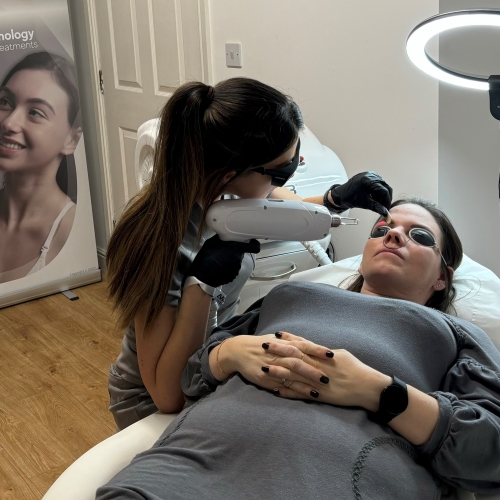
Benefits of ND: YAG Laser Tattoo Removal for Scalp Micropigmentation
The ND: YAG laser is the preferred choice for removing scalp micropigmentation due to its efficiency and safety. Here are the key benefits:
- Effective on Dark Pigments: The 1064 nm wavelength is ideal for targeting the dark pigments used in SMP.
- Minimal Risk of Scarring: The laser minimizes heat damage to the skin, reducing the risk of scarring or pigmentation changes.
- Safe for All Skin Types: The ND: YAG laser is safe for use on all skin tones, including darker skin.
- Fewer Treatment Sessions: Clients typically require fewer sessions compared to other laser types.
Fast Recovery: With minimal side effects, the recovery period is shorter than other laser treatments.
Laser Tattoo Removal for Scalp Micropigmentation: FAQ
Here are some common questions about laser removal for SMP:
- How does laser removal work for SMP?
- The laser breaks down pigment particles, which are then eliminated by the body.
- Is laser removal painful?
- Most people describe it as similar to being snapped with a rubber band. Numbing cream can reduce discomfort.
- How many sessions are needed?
- Typically, 3-8 sessions are required depending on the pigment’s density and depth.
- Will it cause scarring?
- When done with the ND: YAG laser by a skilled practitioner, the risk of scarring is minimal.
- Can I remove just part of my SMP?
- Yes, the laser can target specific areas for partial removal or modifications.
Laser Tattoo Removal for Scalp Micropigmentation: Conclusion
Scalp Micropigmentation (SMP) is a highly effective solution for hair loss, providing natural-looking results. However, mistakes and regrets can occur if the procedure is not performed by a skilled professional. In cases where modifications or full removal are necessary, Laser Tattoo Removal—particularly with the ND: YAG laser—provides the safest and most efficient solution.
Choosing a reputable practitioner, such as Rebecca Brown, ensures that you receive top-quality results from your SMP treatment, reducing the need for future corrections. By making informed decisions and selecting a skilled practitioner, clients can achieve long-lasting, satisfying results with confidence.

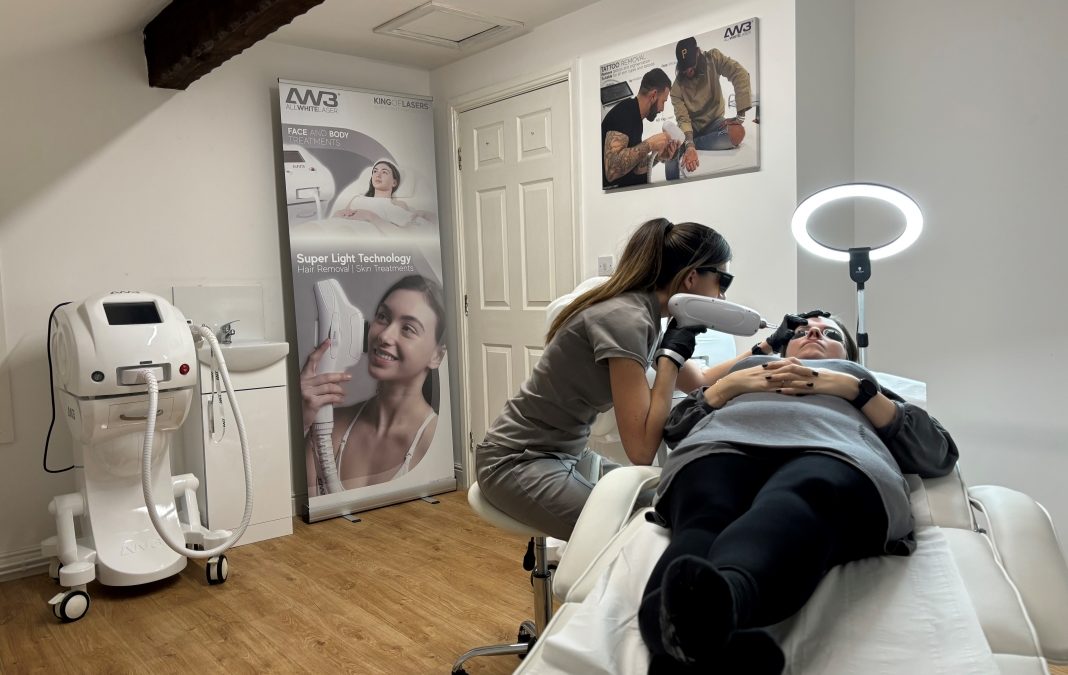
Recent Comments